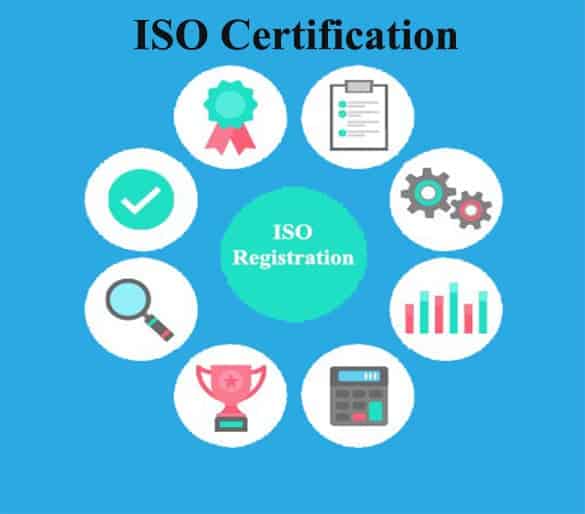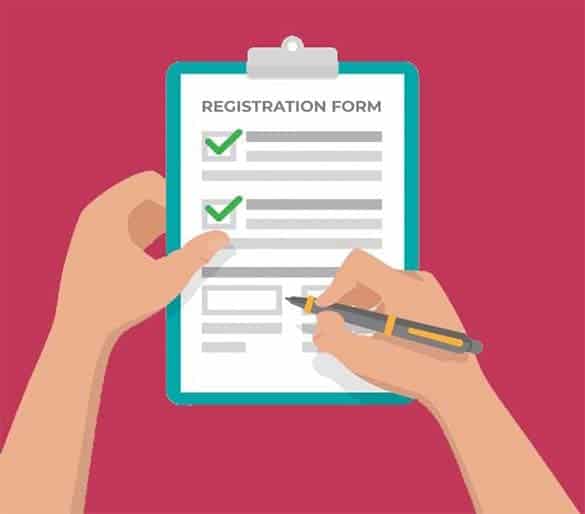ISO Certification

Overview of ISO Certification
- ISO stands for International Organization for Standardization.
- It is an independent and non-governmental organization with a membership of 168 national standards bodies.
- ISO certification certifies that quality of manufacturing industries products and service industries process.
- This certification was handled by several third-party companies and their certify businesses or organizations.
- We can use ISO certifications in many types industries like as Education, Public services, Apparels, Health services, etc., It ensures the quality, safety, consistency and efficiency of products, services, and systems.
- There is many types of certifications are available, each certification has separate standards and criteria and is classified numerically. For example ISO 9001:2015.
- We can register ISO on two ways – Non IAF ISO registration and IAF ISO registration.
Documents Required for ISO Certification

Authorized person's aadhaar card

Authorized person's pan card

Company incorporation certificate or Partnership firm deed and company pan card

GST Certificate or MSME/Udyam certificate
Difference between Non IAF and IAF ISO Certification
Non IAF ISO
IAF ISO
Types of ISO Certification

1) ISO 45001 and related standards
ISO 45001 was standard for management systems of occupational health and safety (OHS). The main aim of ISO 45001 is the reduction of occupational injuries and diseases, including promoting and protecting physical and mental health.

2) ISO 639
ISO 639 is a standardized nomenclature used to classify languages. Each language is assigned a two-letter (639-1) and three-letter (639-2 and 639-3) lowercase abbreviation. For e.x. We can denote Tamil language as ta, tam and tam.

3) ISO 4217
ISO 4217 defines alpha codes and numeric codes for the representation of currencies and provides information about the relationships between individual currencies and their minor units. For e.x. Indian money was defined as “INR” (alphabetic code), “356” (numeric code), “Indian rupee” (minor unit) and “India, Bhutan” (entity).

4) ISO 8601
ISO 8601 was covering the worldwide exchange and communication of date and time related data. The standard representing calendar dates and times in worldwide communications, especially to avoid misinterpreting numeric dates and times.

5) ISO 9660
ISO 9660 is a file system for optical disc media. It was also known as ECMA-119. This specification was available for anybody to purchase and implemented to any operating system.

6) ISO 13216
An ISO 13216 was called as Isofix. It is the international standard for attachment points for child safety seats in passenger cars. It has also been called the “Universal Child Safety Seat System” or UCSSS. It defines standard attachment points to be manufactured into cars, enabling compliant child safety seats to be quickly and safely secured.

7) ISO 6
ISO 6 is a standardized for Film speed. It is the measure a photographic film’s sensitivity to light, determined by sensitometry and measured on various numerical scales. It is used to describe the relationship between exposure and output image lightness in digital cameras. The term speed comes from the early days of photography.

8) ISO 14001 and related standards
ISO 14001 is a related to sets out the criteria for an environmental management system and can be certified to. It maps out a framework that a company or organization can follow to set up an effective environmental management system.

9) ISO/IEC 17025
ISO/IEC 17025 used by testing and calibration laboratories. In most countries, ISO/IEC 17025 is the standard for which most labs must hold accreditation in order to be deemed technically competent.

10) ISO 13485
ISO 13485 specifies for a quality management system where an organization needs to demonstrate its ability to provide medical devices and related services that consistently meet customer and applicable regulatory requirements. ISO 13485:2016 specifies the suppliers or external parties that provide product, including quality management system-related services to such organizations.

11) ISO 22000
ISO 22000 specifies the overall guidelines for food safety management and also focuses on traceability in the feed and food chain. It maps out what an organization needs to do to demonstrate its ability to control food safety hazards in order to ensure that food is safe.

12) ISO 26000
ISO 26000 provides guidance to an organization’s relationship with the society and the environment in which it operates is a critical factor in its ability to continue operating effectively. This standard is used as a measure for an organization’s performance as it provides guidance on how it should operate in socially responsible way.

13) ISO 31000
ISO 31000 provides principles and generic guidelines on managing risks that could be negative faced by organizations as these could have consequence in terms of economic performance and professional reputation.

14) ISO 37001
ISO 37001 standard provides establishment and implementation of an anti-bribery management system (ABMS). An anti-bribery management system helps to organizations in the fight against bribery, by establishing the procedures, policies and controls that help foster a culture of integrity, transparency and compliance.

15) ISO 3166
ISO 3166 defines codes for the names of countries, territories, special areas of geographical and their principal subdivisions. The official name of the standard is Codes for the representation of names of countries and their subdivisions.

16) ISO 50001
ISO 50001 supports organizations in all sectors to use energy more efficiently through the development of an energy management system. The standard aims to help organizations continually reduce their energy use, and therefore their energy costs and their greenhouse gas emissions.

17) ISO 20121
ISO 20121 aims to help organizations improve sustainability throughout the entire event management cycle. It offers guidance to manage our event and control its social, economic and environmental impact.
Benefits of ISO Certification
- ISO certificate ensures the quality of goods and services, this will be impress the customers will choose your business over your competitors. This will result in increased profits.
- ISO was best way for companies to improve their business standards. When your company process was meet ISO standards, it becomes easier for your employees to work together effectively and efficiently.
- The ISO certification process includes an audit of your company’s business operations and procedures on each and every year or three years one time. This will help you identify, where your company can improve efficiently.
- ISO standards allow businesses, how they care about their environmental challenges. This will be assisting them to look at how much resources are being used, energy spent and any other type of impact on our planet’s natural systems.
ISO Certification Process

Collect the proper details and documents from the users.

Verify all the details and documents.
Get the approval certificate.
ISO Certification Fees
Basic
- Non IAF ISO registration
- IAF ISO registration
- ISO, MSME and GST registration
Standard
- Non IAF ISO registration
- IAF ISO registration
- ISO, MSME and GST registration
Premium
- Non IAF ISO registration
- IAF ISO registration
- ISO, MSME and GST registration
*Amount maybe increase or decrease depends upon your business activities.
